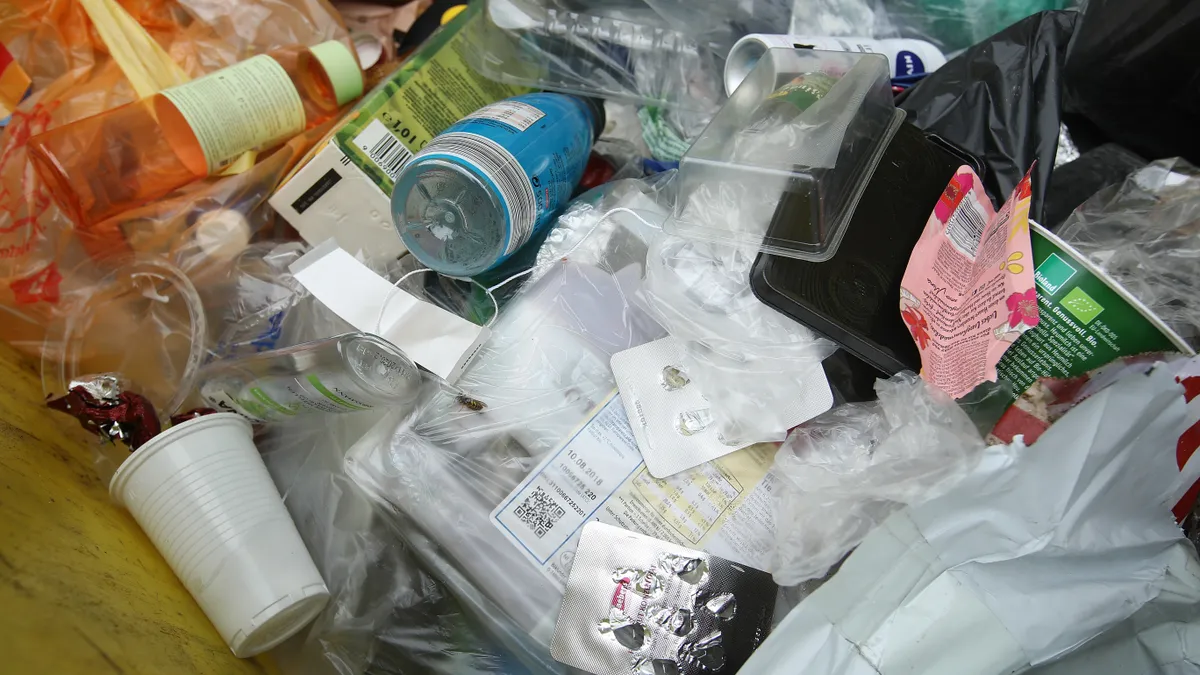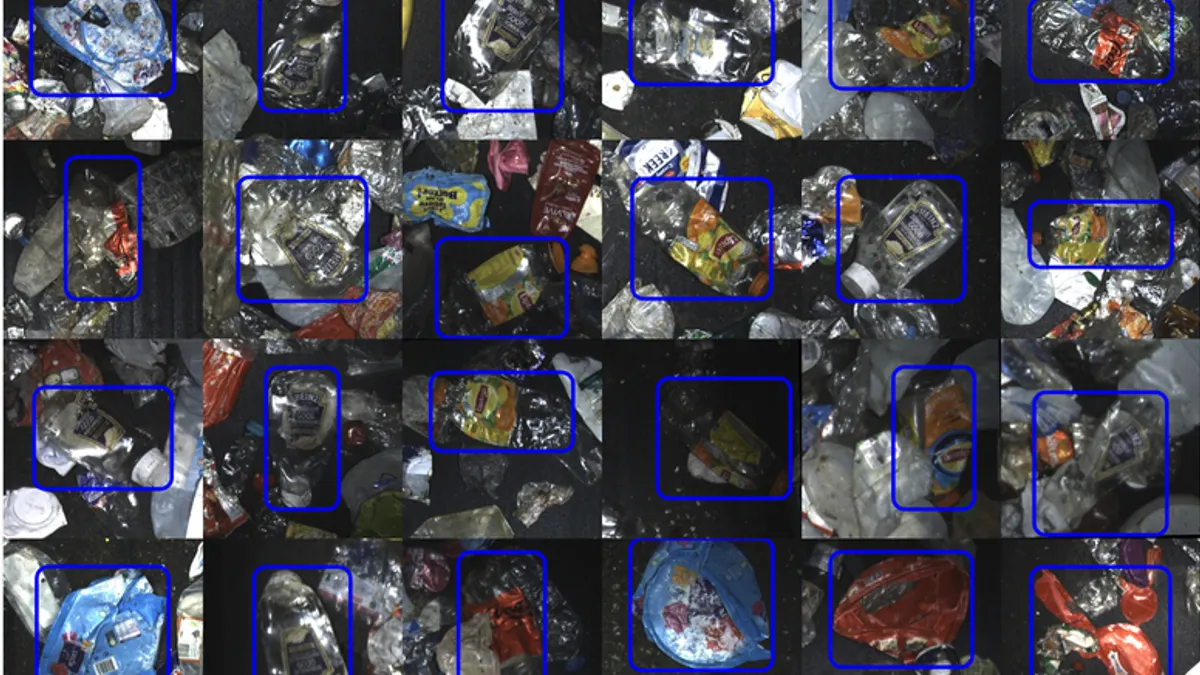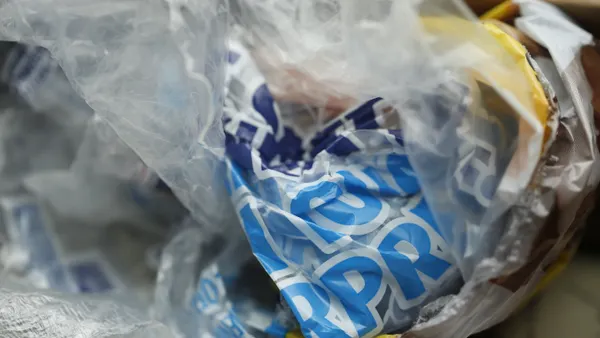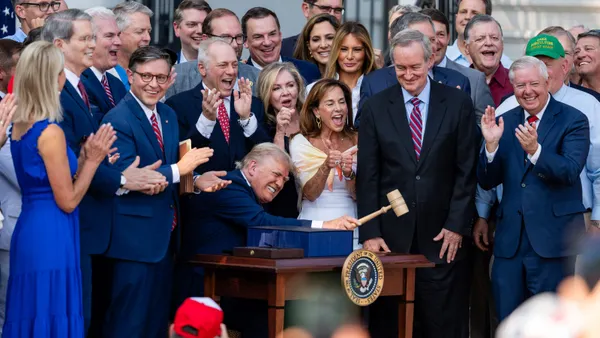Editor's Note: This piece was written by Neil Seldman, co-founder of the Institute for Local Self-Reliance and director of the Waste to Wealth Initiative. The opinions represented in this piece are independent of Waste Dive's views.
Who should be responsible for the life cycle of a product, especially its take-back, recycling and final disposition? How can that process produce the most benefits, and is there more than one answer? Will recycling in the U.S. be hamstrung by beverage corporation interests, or will it succeed in developing increased recycling and zero waste?
Good EPR
Extended Producer Responsibility (EPR) is a good and important policy tool for cleaning up the wastes produced by our economy. When Thomas Lindquist first introduced the concept in Sweden in 1990, he proposed that product manufacturers and distributors should be responsible for the life of their products and packaging after the consumer is through with them.
He theorized that companies responsible for their products would simplify and streamline those products to be more recyclable and/or reusable, as well as less costly, thereby making the overall system less wasteful and more efficient. Industry control would relieve cities from community recycling expenses they could not afford.
EPR has, indeed, had an excellent track record when applied to products that pose a risk to communities, including batteries, paint, mercury switches, old medicines and medical sharps.
These materials are dangerous if combined with traditional solid waste disposal and present a threat to people and the environment. Furthermore, unlike traditional products and packages, their hazardous natures preclude adding value to them by reusing or recycling them in the local economy. Requiring manufacturers and distributors to remove them, and when possible even to redesign them to reduce their risks, creates the best benefits for communities and the environment.
Bad EPR
But EPR has had a questionable track record when it comes to handling products that, while not toxic or dangerous, are still hard to manage at the local level. This has led states to adopt EPR programs for carpets and mattresses, for example. However, these potentially good EPR programs can become bad because of poorly crafted implementation.
In California a carpet EPR law established an industry-controlled, non-profit stewardship organization to oversee the program. But corporate objectives for maximizing profits are not always compatible with achieving the highest environmental values, and therefore public oversight must never be relinquished.
In the California case, the original stewardship plan built its diversion strategy too heavily on incineration. In 2017, the state revised the law to now discourage incineration and to set minimum goals for materials recovery that increase gradually over time.
California, Rhode Island and Connecticut passed mattress EPR laws. These established an industry non-profit stewardship agency dominated by the International Sleep Products Association, which represents the large mattress manufacturers. The law leaves no room for grass roots or small business representation, even though mattress recycling originated at these local levels.
The resulting lack of local input has allowed the mattress EPR programs to support companies that shred and burn materials, thus making it harder for job-intensive recycling enterprises to gain access to mattresses and box springs. When these local recyclers/refurbishers do have access to these materials, they recycle over 90%, including highly valuable cotton, foam rubber, and steel frames in addition to ticking (or textile covers) and wood.
Too often, carpet, mattress and even medicine EPR laws rely heavily on incineration to just get rid of the products rather than prioritizing recycling and reuse. Indeed, Sweden, where the EPR concept was founded, incinerates 50% of its waste stream and is now actually importing garbage from southern European countries in order to keep their incinerators operating.
Barb Heatherington, a recycling entrepreneur and founding member of Zero Waste Canada, points to the "inherent nexus between EPR and incineration." But "environmental responsibility" should be about maximizing the resources inherent in these products, not simply looking for a way to "get rid of" them.
EPR for electronic scrap also has had disappointing results, requiring revisions in the laws for an illuminating set of reasons. For one, implementation of an electronic scrap recycling law in Pennsylvania actually led to higher costs because the local governments could no longer charge for drop off fees at aggregation depots. The state had to intervene to provide support funds.
A bigger problem, however, is when poorly planned electronic scrap laws displace allied social benefits that traditional recyclers had provided. For example, electronic scrap EPR laws favor large OEMs and their contractors, enabling them to immediately monopolize access to used machines.
However, the small businesses and non-profit enterprises that previously handled end-of-life for this equipment did more than simply repair, refurbish or recycle it. They also provided employment and training to workers from disadvantaged communities, encouraging young people to learn skills and computer literacy. They sold low cost machines to schools, community organizations and families, enabling volunteers to provide thousands of hours annually for training youth and under-employed residents. They also often furnished additional social services that build strong communities such as family planning, childcare training, budget and household management, and removal of gang tattoos.
The Indianapolis non-profit RecyleForce, for example, hires and trains formerly incarcerated men and women to recycle electronics, and reports that those employees are then far more successful at returning to their communities than average. The company reports a 25% recidivism rate for those in their program vs. the reported national average of 76.6%. Fostering such external benefits is invaluable for a community's quality of life and should not be sacrificed. Instead, a good EPR law will recognize them and build their sustenance into the implementation.
Ugly EPR
The ugly side of EPR appears in the form of an effort by Pepsi, Coca Cola and Nestlé to extend EPR to all printing, paper and packaging (PPP) materials. They would establish EPR programs run exclusively by stewardship agencies under their control, with a structure that gives "the force of law" to their policies.
In other words, citizens would give up their right to vote on solid waste management and recycling decision-making, and be forced to rely on consumer actions to address beverage industry fiat. Indeed, consumer pressure can be effective, as we have seen with McDonald's, Dunkin' Donuts and other companies voluntarily phasing out polystyrene food packaging. But consumer pressure is no substitute for citizens’ right to vote. As Stacy Mitchell, Co Director of ILSR, puts it, "Our citizen muscles are far stronger than consumer muscles."
Mary Lou Van Deventer, operations manager at the Urban Ore Ecopark in Berkeley, CA, calls EPR for PPP a "hostile takeover of the US recycling industry" by the dominant beverage corporations. Van Deventer prefaces her remarks by focusing on the success of recycling in the US in creating over 1.5 million jobs, through 60,000 companies and 40,000 government programs with the impact of $300 billion in sales for the industry. This success and this industry would be at risk under the beverage industry EPR.
The traditional recycling sector is diverse, made up of collection companies, manufacturers, purchasers, governments, and organized citizens opposed to eliminating local control over decision-making. The beverage companies' EPR plan would shift municipal and unionized workers to new corporations with reduced wages and benefits, and sometimes even temporary job status.
Further criticism comes from recycling activists who see a ‘stealth’ campaign to undermine recycling and in particular container deposit legislation. The beverage companies have used non-profit environmental organizations to promote their policies, as well as hired former state legislators to lobby their former colleagues, based on conversations I've had with sources. First, environmental and recycling organizations and elected officials were kept in the dark about EPR PPP legislation. When that failed, the companies opened a revolving door for jobs and consultancies. The National Stewardship Action Council has been formed to overcome resistance to EPR PPP laws.
Most critically, the proposed corporate-dominated EPR would halt all chances of citizen input at the local level, thus eliminating the true engine of recycling in the U.S.: citizens' push for "more" — more materials, more households, more resources reused and recycled — to continue transforming today's recycling programs towards the goal of zero waste. Already, grass roots agitation has banned products from being sold (plastic bags, polystyrene cups) in some areas and passed minimum content laws that require the use of recycled materials in new products.
What comes next?
Now activists have set their sights on plastic straws, bottle caps and coffee/tea pods. This may seem innocuous but this minutia of the waste stream converges in our streams, rivers and oceans, with grave consequences. California Assembly Bill 2779 requires single-use plastic beverage containers to have a tethered cap. Tethered caps would stay attached to the bottles, helping ensure that plastic waste goes to the recycler.
Even more threatening to current production norms is the growing appeal to ban single use (one-way) plastic products as a means to stop plastic pollution and reduce the amount of virgin plastic produced globally. These demands for dealing with the minutia in the waste stream define the evolution of the U.S. recycling movement, which started in the late 1960s, to the zero waste movement initiated in the US in 1995 by Urban Ore, Grass Roots Recycling Network and ILSR.
Large and small corporations are opposed to the beverage industry giants' EPR plans for national hegemony over recycling. Hauling companies fear the loss of their current contracts. Hundreds of companies and their trade associations opposed this unnecessary control. Despite two years of efforts by the Connecticut Department of Energy and the Environment (DEEP) and non-profit organizations promoting Extended Producer Responsibility for PPP, their proposal was recently defeated.
The EPR for PPP approach is dripping with hypocrisy. One of the oldest and best forms of EPR is the bottle bill, or container deposit legislation. This EPR approach operating in 10 states delivers the cleanest recyclable material, is virtually free of public costs and is highly effective. Yet the beverage industry EPR for PPP program is designed to stop any new bottle bills and repeal existing ones. These bottling companies have an anti-container deposit ideology akin to religious fervor.
Perhaps the most striking shortcoming of the EPR–PPP gambit is that it has been shown to be ineffective. In Germany, where EPR for PPP has operated for decades, there is in fact an increase in per capita packaging waste.
Finally, despite EPR's stated purpose of spurring the redesign of products and packages for increased recycling and reuse, there is no evidence that any redesign has taken place other than new labels and "light weighting," a common sense step to use lighter materials in packaging and products. This is not what the advocates of EPR for PPP have advertised.
Given the financial and redesign shortcomings and the threat that EPR–PPP will undermine citizen efforts for "more" recycling, reuse and detoxifying of the waste stream, why is EPR for PPP attractive to some local governments?
Certainly the seductive appeal of "free" recycling has aroused interest. Stealth in introducing a radical proposal, bait and switch tactics, misinformation about a high-risk proposition and heavy lobbying have propelled EPR–PPP to date. But recent developments in California and Connecticut indicate that the traditional values of the U.S. grass roots recycling system have held firm. The 40-year momentum created through democratic organizing by citizens and environmental groups, small businesses, local government staff, and progressive elected officials will continue.

















